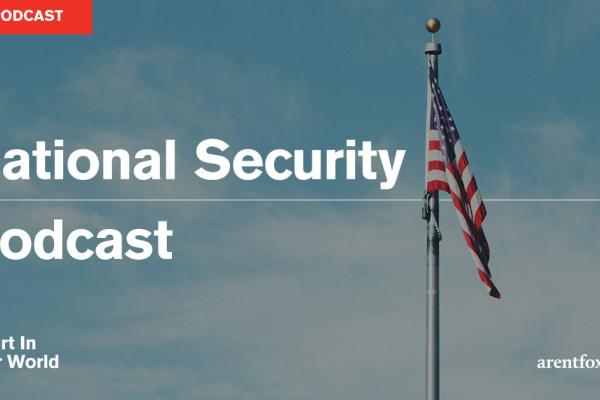Insights on Export Controls & Economic Sanctions
189 total results. Page 3 of 8.
On October 28, 2022, the US Department of Commerce, Bureau of Industry (BIS) issued FAQs on the new semiconductor regulations. The FAQs are short and relatively clear (thank you!) even if they were released on a Friday afternoon.
On Friday, October 7, 2022, the Bureau of Industry and Security (BIS) released an interim final rule containing an enormous set of export controls that will likely damage the Chinese semiconductor, advanced computing, and supercomputer industries.
The 2022 Canadian Transportation Equipment Association’s Annual Conference and Trade Fair, promises to be yet another fantastic opportunity for trailer and vocational truck manufacturers, their dealers, suppliers, and service providers to gather and network.
Kay Georgi speaks at ACI’s US-China Trade Controls Conference.
The 2022 edition of Chambers USA: America’s Leading Lawyers for Business has recognized 66 ArentFox Schiff attorneys as leaders in their field.
On May 8, 2022 (aka Mother’s Day), the Biden Administration announced yet another series of export controls and sanctions measures intended to ratchet up the costs on Russia’s economy and limit its ability to continue its war in Ukraine.
On Friday, April 8, 2022, the US Government added two more weapons to its artillery of actions against Russia and Belarus.
On March 11, 2022, the President issued Executive Order 14068 (EO 14068) Prohibiting Certain Imports, Exports, and New Investment with Respect to Continued Russian Federation Aggression.
In a coordinated effort, on March 2, 2022, the White House announced another round of broad trade controls and sanctions against Russia and now Belarus in response to Russia’s military invasion of Ukraine.
On February 25 and 28, 2022, the US Treasury Department, Office of Foreign Assets Control (OFAC) issued its fifth and sixth actions against Russia.
In this video episode of Fashion Counsel, Arent Fox Fashion & Retail Leader Anthony Lupo speaks with Consumer Products and Fashion & Retail Partner Angela Santos to discuss how companies can reduce import duties and prevent costly import detentions due to forced labor found in their supply chai
On September 2, 2021, OFAC published an update to their October 2020 Ransomware Advisory. We reported on the original Ransomware Advisory in our alert on October 8, 2020, OFAC’s New Ransomware Advisory.
On September 7, 2021, three former U.S. Intelligence Community and military personnel (Defendants) entered into a Deferred Prosecution Agreement (DPA) with the U.S. Attorney’s Office for the District of Columbia and the U.S. Department of Justice, National Security Division.
Sixty-nine Arent Fox LLP attorneys have been rated as leaders in their profession by The Best Lawyers in America 2022.
Chambers USA: America’s Leading Lawyers for Business has recognized 42 Arent Fox LLP attorneys as leaders in their field.
Arent Fox Partners Kay Georgi and Matthew Tuchband spoke as part of the webinar “New Ransomware Advisory and Handling Cyberattacks.”
Companies should be prepared to conduct additional due diligence for any transactions involving entities in the countries enumerated in this rule.
Changes are afoot for key industry sectors with complicated global supply chains.

Arent Fox International Trade Group Partner Marwa Hassoun and Government Contracts Group Counsel Travis Mullaney chat about Section 889 of the National Defense Authorization Act.

In his last days, President Trump takes a swipe against companies identified by the Department of Defense (DoD) as Communist Chinese military companies by prohibiting US persons from investments.
Arent Fox Partner Kay Georgi will speak at the Passport to Proficiency Series on the Export Administration Regulations event.
The US Department of Commerce, Bureau of Industry and Security (BIS) has proposed a new Export Control Classification Number (ECCN), 2D352, to control “software” that is capable of being used to operate nucleic acid assemblers and synthesizers.

The US Department of Commerce, Bureau of Industry and Security (BIS) issued a final rule amending the license review policy for items on the Commerce Control List that are controlled for national security (NS) reasons and are destined to the People’s Republic of China (PRC), Venezuela, or Russia.
Arent Fox International Trade Practice Leader Kay Georgi will speak as a Co-Chair at the US-China Trade Controls Conference hosted by the American Conference Institute on October 22, 2020.
The Committee on Foreign Investment in the United States (CFIUS) is now following new rules on mandatory filings for certain foreign investments in critical technology companies.